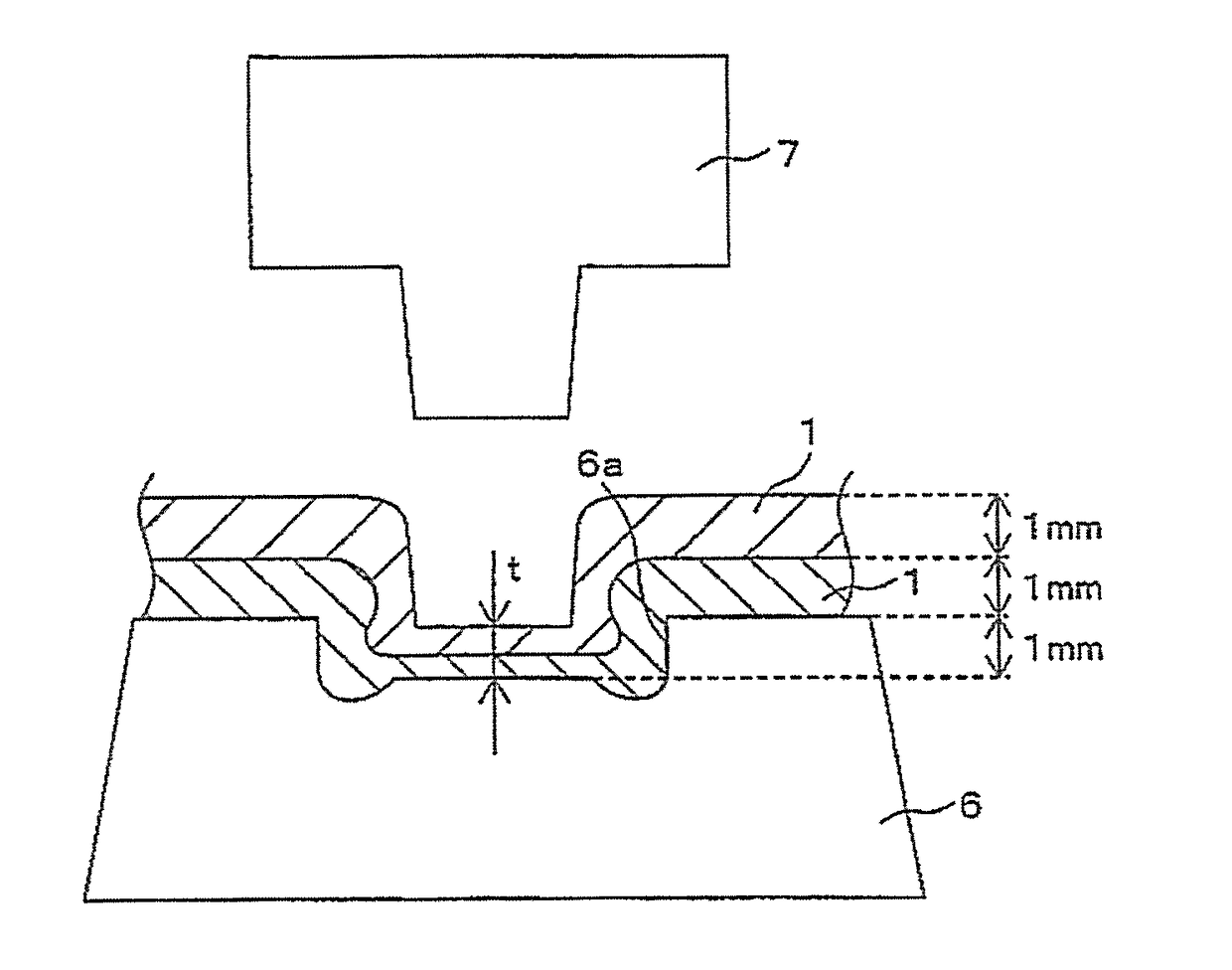Metal joint and manufacturing method therefor
a technology of metal joints and manufacturing methods, applied in the field of metal joints, can solve the problems of insufficient adhesion between materials, insufficient joint strength, and no contribution to improving joint strength, and achieve the effect of improving joint strength
- Summary
- Abstract
- Description
- Claims
- Application Information
AI Technical Summary
Benefits of technology
Problems solved by technology
Method used
Image
Examples
embodiments
1. Embodiment 1 (Surface Modification Processing)
[0040]The present invention is described below in more detail with reference to an embodiment.
[0041]FIG. 3 is a photo of a surface of an aluminum (an aluminum alloy manufactured by KOBE STEEL LTD: 6K21) rolled material with a thickness of 1 mm. FIG. 3(A) is a photo photographed at a magnification of 100. FIG. 3(B) is a photo photographed at a magnification of 500. As shown in the drawings, micro traces of a rolling roller remain on the surface of the rolled material.
[0042]Second, a pulse laser apparatus (manufactured by Clean Laser System Company; power: 120 W; focal distance: 150 mm; pulse frequency: 10 kHz; scan frequency: 50 Hz) is used to perform surface modification on the rolled material. Pulse laser scanning is performed seamlessly on a whole surface of a local part of the rolled material.
[0043]FIG. 4 is a photo of a surface of a metal plate after surface modification is performed under the condition. FIG. 4(A) is a photo photo...
embodiment 2 (
2. Embodiment 2 (V-Shaped Bending Test)
[0044]According to Japanese Industrial Standards (JIS) Z2248, a V-shaped bending test is performed on the rolled material and the metal plate after surface modification. The V-shaped bending test is the following test, that is, making a male die and a female die that have a press surface bent into a V shape at a specified angle sandwich a sample to bend the sample. In the V-shaped bending test of the metal plate, a part after surface modification is located at an angular side of the V shape.
[0045]FIG. 5(A) is a photo of a surface of a rolled material before a V-shaped bending test. FIG. 5(B) is a photo of a surface of a bending portion of the rolled material after the V-shaped bending test. As shown in FIG. 5(B), large cracks of a metal oxide film are seen on the surface of the bending portion of the rolled material.
[0046]On the other aspect, FIG. 6(A) is a photo of a surface of a metal plate after surface modification before a V-shaped bending...
embodiment 3 (
3. Embodiment 3 (Riveted Joint)
[0049]Metal oxide films of single surfaces of the rolled material used in Embodiment 1 are removed by using a wire brush, and two rolled materials are made overlapped to form laminated metal plate in a manner of making the surfaces face each other. In addition, two metal plates are made overlapped to form laminated metal plates in a manner of surface facing of surface modification performed in Embodiment 1. In this case, the rolled materials and the metal plates are set to be reed-shaped, and the rolled materials and the metal plates are staggered from each other to form laminated metal plates. A riveting apparatus (manufactured by TOX company) shown in FIG. 7 is used to shape the laminated metal plate into a shape shown in FIG. 7, and riveted joint is performed. The riveting apparatus is an apparatus having the following structure, that is, a die 6 with a recess 6a, and a punch 7, and the punch 7 is made to approach or far away from the die 6. A lower...
PUM
| Property | Measurement | Unit |
|---|---|---|
| thickness | aaaaa | aaaaa |
| thickness | aaaaa | aaaaa |
| thickness | aaaaa | aaaaa |
Abstract
Description
Claims
Application Information
 Login to View More
Login to View More - R&D
- Intellectual Property
- Life Sciences
- Materials
- Tech Scout
- Unparalleled Data Quality
- Higher Quality Content
- 60% Fewer Hallucinations
Browse by: Latest US Patents, China's latest patents, Technical Efficacy Thesaurus, Application Domain, Technology Topic, Popular Technical Reports.
© 2025 PatSnap. All rights reserved.Legal|Privacy policy|Modern Slavery Act Transparency Statement|Sitemap|About US| Contact US: help@patsnap.com



